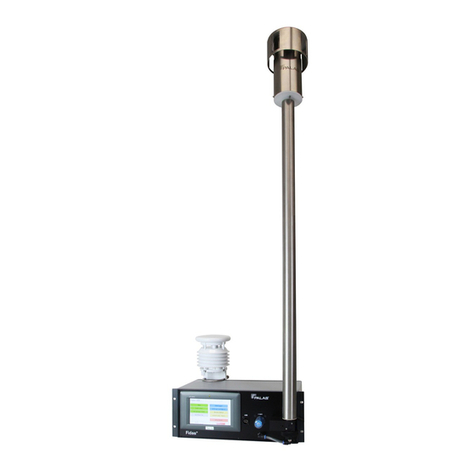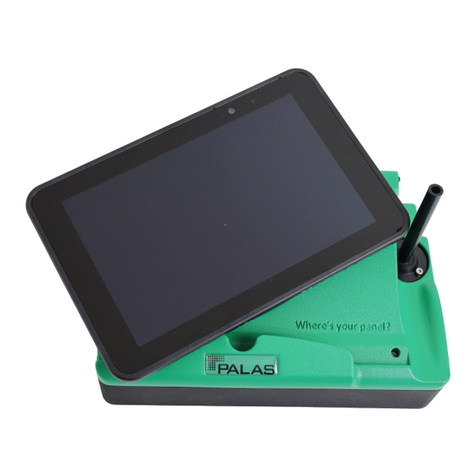
OPERATING MANUAL RBG 1000 IAND RBG 1000 ID
©PALAS ®GMBH, KARLSRUHE,VERSION V001022014
Index
IMPORTANT NOTE !!!.......................................................................................................... 4
1. CHECK OF DELIVERY.....................................................................................................5
1.1 ACCESSORY EQUIPMENT SUPPLIES CHECK FOR STANDARD VERSION................................ 5
2. SAFETY CONDITIONS / INTENDED USE .................................................................................6
2.1 GENERAL SAFTY CONDITIONS .................................................................................................... 6
2.2 INTENDED USE ....................................................................................................................... 6
2.3 RESPONSIBILITY OF THE OPERATOR............................................................................................. 6
3. FIRST OPERATING INSTRUCTIONS.........................................................................................7
4. OPERATING PRINCIPLE................................................................................................. 8
4.1 FEED RATE AND MASS CONCENTRATION........................................................................... 9
4.2 FEED RATE CONSTANCY .................................................................................................... 9
4.3 DISPERSION AIR AND DISPERSION EFFECT....................................................................... 10
4.4 ELECTROSTATIC CHARGING OF THE DUST PARTICLES ..................................................... 10
5. GENERATOR LAYOUT.................................................................................................. 11
5.1 GENERAL DESCRIPTION ................................................................................................... 13
5.2 OPERATING PANEL........................................................................................................... 14
5.3 DISPERSION HEAD............................................................................................................ 16
5.4 COMPONENTS LAYOUT OF DSIPERSION HEAD................................................................... 17
5.5 INTERNAL COMPRESSED AIR FLOW SYSTEM.................................................................... 18
6. OPERATING THE RBG 1000 I AND RBG 1000 ID..................................................... 19
6.1 SETTING OF DISPERSION VOLUME FLOW.......................................................................... 19
6.1.1 The Volume Flow Curve....................................................................................... 19
6.1.2 Volume Flow Curve Check................................................................................... 19
6.2 FILLING OF THE POWDER RESERVOIR............................................................................... 21
6.3 INSERTING OF THE POWDER RESERVOIR .......................................................................... 22
6.4 SETUP OF THE GENERATOR FOR OPERATION.................................................................... 22
6.4.1 Position of Generator........................................................................................... 22
6.4.2 Connection Lines for Dust Transportation .......................................................... 22
6.5 FEEDING AND DISPERSION ............................................................................................... 23
6.5.1 Continuous Operation.......................................................................................... 23
6.5.2 Intermittent Operation.......................................................................................... 23
6.6 CHANGING OF POWDER RESERVOIR................................................................................. 23
7. MALFUNCTIONS............................................................................................................. 24
7.1 TABLE OF OPERATING-AND TROUBLE INDICATORS......................................................... 24
7.2 BREAKDOWN,CAUSE,AND ELIMINATION........................................................................ 25






























